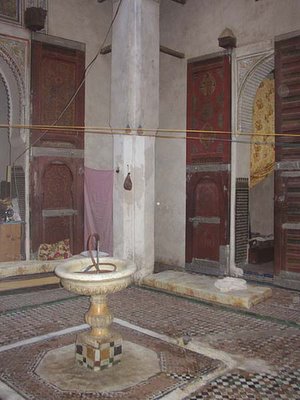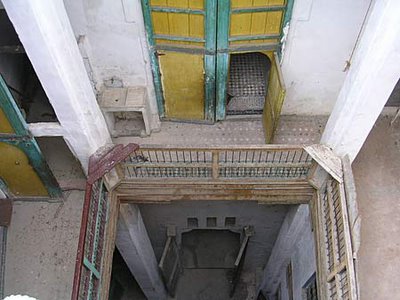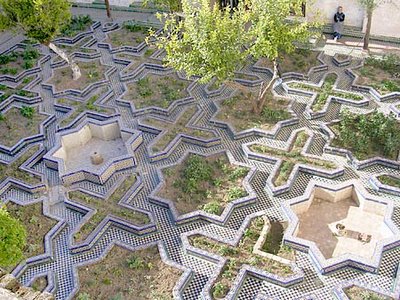
Although buying a riad or dar in the Fez Medina may sound like an attractive and even romantic proposition. It is important to remember that this is a World Heritage listed city. That means that any restoration must be carried out in a way that conserves the heritage values. This can be time consuming and difficult. Below you will find some more information on Fez and also some photographs of the kinds of problems facing anyone wishing to start work on a renovation.
The Medina was listed by UNESCO in 1981. Founded in the 9th century and home to the oldest university in the world, Fez reached its height in the 13th–14th centuries under the Marinids, when it replaced Marrakesh as the capital of the kingdom. The urban fabric and the principal monuments in the medina – madrasas, fondouks (inn and storehouse, known as a caravanserai in the eastern part of the Arab world), palaces, residences, mosques and fountains - date from this period. Although the political capital of Morocco was transferred to Rabat in 1912, Fez has retained its status as the country's cultural and spiritual centre.
Fez has fortified walls, 8 kilometres long. Cities with complex and labyrinth alleys were built in the Mediterranean region to thwart invasions. The ancient city of Fez is a superb example.
Construction began at the end of the 8th century. Mosques were built in the centre, and shops and houses were built as close as possible. The tangled narrow streets make up the world’s most complicated labyrinth city. It is almost impossible for newcomers to find their way.
There are bicycles but there are no cars. People rely on donkeys to carry goods. Women in Muslim society have kept to the tradition of not revealing their faces to men other than their family members. There is a tradition of sitting by a rawashin window. The women used to watch the outside world through its holes.
The doors in the medina were built in alternate positions because the alleys are so narrow. Though the alleyways are dark, the houses inside are bright and open. A patio allows fresh air and light to stream in, while the high walls block the sun’s rays. A central aspect of Islamic architecture. The medina’s rooftops include a series of open air spaces leading to a patio below.
People living in the Old City of Fez are said to spend their life within the city walls without ever going outside. The spirit and tradition of medieval Islamic society lives on, here, in Fez.
LINK: A Moroccan Glossary
LINK: Introduction to Domestic Architecture in the Fez Medina
LINK: THE VIEW FROM FEZ: What is a riad?
LINK: THE VIEW FROM FEZ: Why restore a house in Fes?
LINK: Everything you need to know about conservation/renovation
Tags: Morocco, Fès, Maghreb, Medina







2 comments:
Hi, Just found your blog, could you tell me which riads are most suitable for praticing muslims? We want to stay in Fez!
Hello anonymous.
Any guesthouse would be suitable for practising Muslims. There are around 350 mosques in the medina, so you'd never be far from one. All food is halal as Morocco is a Muslim country.
Enjoy!
Post a Comment